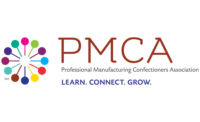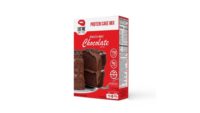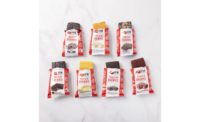Sugar-Free Freedom
By Renee M. Covino
With health concerns, product innovation, and major brand endorsement as the wind beneath its wings, sugar-free confectionery has set sail for even bigger mainstream growth — here and abroad.
You could say
that sugar-free confections have a new-found freedom. Thanks to the
development of new sweeteners and the backing of major candy brands, the
niche category is now outperforming the sales growth of the total U.S.
confectionery market, according to a new report from Euromonitor
International titled “Health and Wellness Food in the U.S.”
From 2004 to 2005, reduced-sugar confectionery sales
grew by 6.1 percent in the United States to reach $3.3 billion. Over the
same year, the total confectionery market grew at a much slower rate of 1.3
percent, reports Euromonitor. It is true that reduced sugar-confectionery
comprises only 13 percent of the confectionery market, but that share has
grown from just under 11 percent in 2002.
Not so foreign
But the United States is not the first, nor will it be
the last, country to shine with sugar-free. Across the Atlantic Ocean, the
UK has seen a 36 percent growth in the past three years in
“confections that have traded sugar for bulk sweeteners,”
according to a UK spokesperson for Palatinit, a Germany-based producer of a
number of sugar-free ingredients such as Palatinose.
Additionally, just over 34 percent of United Kingdom
consumers are now avoiding sugar, while in France and Germany, the figures
are 40 percent and 37 percent, respectively, according to Mintel. It and
other market analyst companies say the sugar-free surge is not limited to
Western Europe and the United States. China is believed to be the
next up-and-coming market for sugar-free products, having experienced a 146
percent growth rate of sugar-free gum in 2005 over the previous year.
There is reportedly also “impressive sales
potential” in new markets such as Poland, Russia, Turkey, Greece and
South America. U.S. manufacturers are therefore taking an increasing
interest in new sectors such as these, where demand far exceeds supply.
Mainstream attraction
Health concerns (including an alarming increase in
diabetes, but certainly not limited to that) have piqued consumer interest
in the category, especially now that major confectionery brands, with much
better-performing/better-tasting sugar substitutes, are now commonplace to
sugar-free selections. What was once a targeted niche market, typically
sold only through health food stores or the less-traveled sections of
drugstores and supermarkets, is now a mainstream attraction. It is safe to
say Americans now view sugar-free confectionery as a healthier alternative
to the entire category, rather than just a product for diabetics.
Russell Stover and Hershey were two “big
name” players first on the scene. Russell Stover introduced its own
line of sugar-free confections, including sugar-free jelly beans,
sugar-free chocolate assortment boxes and sugar-free caramels. Primarily
using the sweetener lactitol, Hershey initially unveiled sugar-free
Reese’s Peanut Butter Cups, York Peppermint Patties and Jolly
Ranchers, then last year added sugar-free White Reese’s Cups,
Twizzlers and Baking Chunks.
More recently, many other mainstream players have been
added to the sugar-free lineup, including Nestlé Crunch and Dove
Sugar Free Chocolate in three dark varieties.
From the gourmet side, Godiva also ventured into the
sugar-free sector with products containing maltitol.
When it comes to merchandising sugar-free, recent
research reported by the National Confectioners Association (NCA), shows
that best-practice retailers establish a sugar-free section within the
regular candy section, rather than lining up sugar-free SKUs with their
non-sugar-free brand counterparts. Retailers who set it up as a separate
section are showing significantly higher sales.
As for the category’s outlook, Euromonitor is
just one that has gone on-record with the good news, predicting that
sugar-free products “will record strong growth of nearly 5 percent
per year, over the next five years.” Additionally, “not only
are sugar-free products expected to benefit from wider distribution, but
they will also benefit from a more durable health message than that of
low-carb products,” it reports. n
Sugar-Free Still a Significant Factor
It is only to be expected that sugar-free chocolate
candy would come off the “euphoric high” it had over a year ago
during the peak of the low-carb days. But together with non-chocolate
candy, excluding gum, “it’s still about a $350 million
category; it’s bigger than licorice and larger than mints (without
breath fresheners),” says Jim Corcoran, vice president of trade
relations for the National Confectioners Association (NCA).
“There’s no way this category is not going to grow, especially
with the current demographic trends of baby boomers and also the increase
in diabetes.”
Diabetes Doubles
Some predict the sugar-free confectionery market will
grow even stronger with the rise in diabetes. The occurrence of new cases
of Type 2 diabetes has doubled over the past three decades, according to a
recent report in the American Heart Association’s Circulation
Journal. It was further reported that “most, but not all, of the
increase in diabetes occurred in people who were obese — those with a
body mass index of 30 of more.” For those who were not obese, the
findings suggested that “changes in dietary and physical activity
patterns that are independent of changes in body weight may also contribute
to the present findings.” For example, another study from the same
team showed that “consumption of sugar-sweetened beverages is an
independent risk factor for diabetes, even after adjustment for weight
gain.”
Will the same conclusion be made for sugar-sweetened
daily treats? Perhaps, but industry experts believe that along with sales
gains in sugar-free will come sales gains in smaller and single-portion
treats.
“I am a diabetic and I still want the real thing
— just less of it,” admits one manufacturer of both sugar and
sugar-free confectionery.
What Makes It Sweet
The vast majority of American consumers (78 percent)
would prefer to have more information about what is sweetening their foods.
That’s according to a recent survey of 1,786 respondents
conducted by Harris Interactive for the Sugar Association.
And it’s not surprising, given the long list of
sweetener options available today. According to Andy Briscoe, president of
the Sugar Association, 26 different ingredients are currently used to
sweeten foods.
Nearly seven out of 10 respondents (68%) said that
when a food or beverage contains alternative sweeteners (polyols and
artificial), they wanted to see them listed on the front of the package.
Given a list of four sweetening ingredients and asked
to identify which was a sugar alcohol/polyol sweetener, only 19 percent
could answer correctly, while 76 percent of respondents were unsure. In
addition, fewer than half of survey respondents could correctly classify
commonly used food ingredients as fat, protein, carbohydrate, sweetener,
vitamin, mineral, preservative or bulking-filler.



